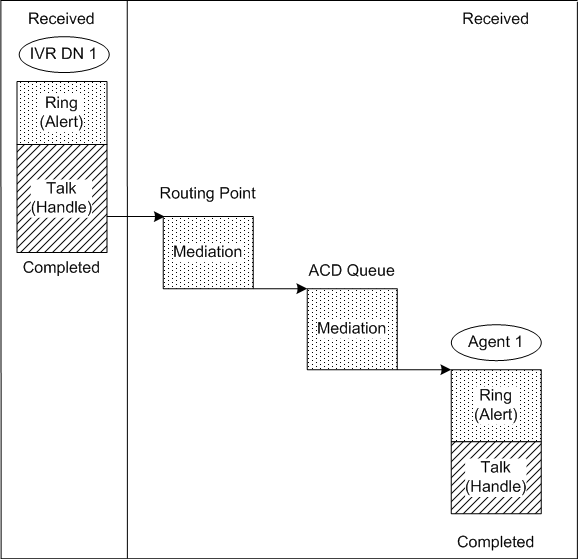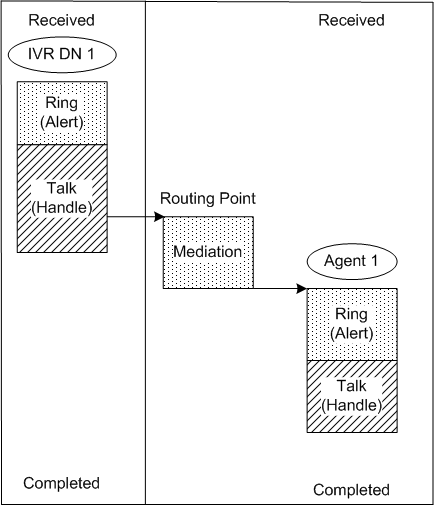Universal_Routing
A Genesys CIM Platform component that provides voice-routing capabilities When it is combined with Multimedia, various types of non-voice media can also be routed. These two components work together to enable seamless routing of both voice and non-voice interactions. More information on Universal Routing is provided here.
Glossary
Interactive Voice Response
Also known as IVR. A hardware and software system that uses responses from a touch-tone telephone to gather and store data. It uses a recorded human voice to reply to user input. It is sometimes referred to as the Voice Response Unit (VRU).
IVR can also refer to systems that provide information in the form of recorded messages over telephone lines, in response to user-supplied input in the form of spoken words or, more commonly, Dual-Tone Multi Frequency (DTMF) signaling. Examples include banks that enable you to check your balance from any telephone, and automated stock-quote systems. For example, For checking account information, press 1 or If you want a stock quote, press 2.
A computer technology that enables users to connect to a computer system and obtain information through voice input, instead of by using a keypad, keyboard, or touch-tone telephone device. An IVR system responds to a human voice, looks up information, presents alternatives, and interacts with the caller.
Glossary
IVR-in-Front-of-Switch Assisted by Universal Routing Call Flows
This page illustrates voice inbound call flows that are available in IVR solutions that use Genesys Universal Routing, where the IVR is deployed in front of the switch.
Voice interactions arrive at an IVR that is visible to the IVR Server’s virtual T-Server. Through a Routing Point in the IVR Server’s virtual T-Server, the IVR application invokes an Universal Routing strategy. Universal Routing instructs the IVR application to play applications or collect information. Universal Routing uses the collected information to return an appropriate target. The IVR application hook-flash transfers the call to that target.
The following call flows are supported:
Inbound interaction — IVR transfers to ACD queue
| This call topology shows the outcome of a call that an IVR transfers to an ACD queue, in accordance with routing instructions. The call arrives at an IVR DN. The IVR requests routing instructions from a Routing Point, and then hook-flash transfers the call to an ACD queue.
Technical Descriptors illustrated:
|
Inbound interaction — IVR transfers to agent
| This call topology shows the outcome of a call that an IVR transfers directly to an agent, in accordance with routing instructions. The call arrives at an IVR DN. The IVR requests routing instructions from a Routing Point, and then hook-flash transfers the call to an agent.
Technical Descriptors illustrated:
|


